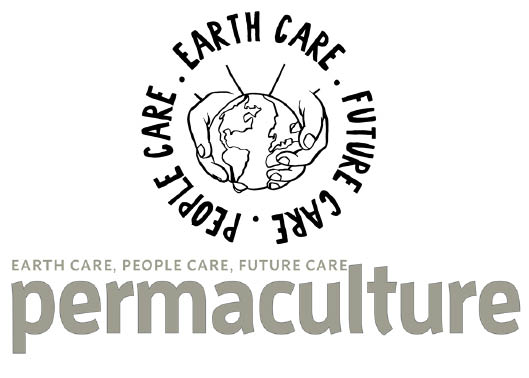People often ask us about the legal and legislative aspects of having a compost toilet and disposing of, or treating (dealing with) solid and liquid ‘waste’ outputs from a compost toilet on their land. Because compost toilets are waterless, they are considered to be a very ‘green’ or environmentally responsible choice, which is certainly true when the outputs are dealt with correctly.
There are some aspects of the whole process to consider carefully, such as making sure the installation meets the current UK Building Regulations, and further more, that the outputs are dealt with legally, responsibly and safely (both for the owner and for the environment) which comes under the Environment Agency (EA) in England and Wales, and the Scottish Environment Protection Agency (SEPA) for Scotland.
For non-domestic installations (commercial sites, camp sites etc), it’s important to seek further clarification and advice from the relevant authorities. This is because the volume of ‘waste’ outputs is likely to be larger.
This information is provided as a guide only – it’s vital to do your own thorough research and speak to the relevant authorities!
In 2010, the new part G of the Building Regulations for the UK came into force. The new regulations are part of a drive to reduce domestic water consumption by 18% and they mention compost toilets for the first time.
Part G 4.19 states (accessed and text copied as of Jan 2018)
“Chemical toilets or composting toilets may be used where: a. suitable arrangements can be made for the disposal of the waste either on or off the site; and b. the waste can be removed from the premises without carrying it through any living space or food preparation areas (including a kitchen); and c. no part of the installation would be installed in any places where it might be rendered ineffective by the entry of flood water.”
This means provided you have a planned route to take the waste from the toilet out of the building, without going through a living area, a Separett or an Air Head compost toilet would meet building regulations. If the building you wish to install a compost toilet is an outbuilding or garden building and is of such size that it does not require building regulations, then the installation of a compost toilet would not require you to meet the above requirements.
In England and Wales, the Environment Agency are under-resourced and are moving more towards more ‘self certification’, especially in low-impact systems such as compost toilets connected to individual dwellings. Unfortunately, finding the relevant information from the EA (Environment Agency) can be tricky!
Remember that the EA and SEPA are there to ensure that processes you engage in are safe for people to use, and don’t damage or pollute the environment directly or indirectly. You might find the regulations frustrating, but they are there to ensure a safe environment for future generations!
As mentioned above, discharges to the ground of under 10 litres per day can generally be self-certified under an ‘exception’ clause as the discharge is considered very small. Nevertheless, you must ensure the discharge is done responsibly ie at least 10 metres away from a watercourse etc.
We suggest doing a written assessment of how you plan to deal with the outputs from your compost toilet – detail the positions of the discharge and composting points, possible contamination effects and limits etc, does the land flood, where will the compost bins be located? Have this documentation available in case officials want to ask you for more information. This will show you’ve been thorough and have thought through the entire process.
Please do check with officials in your locality – this is only a guide and has been reproduced in good faith. The summary was correct when we obtained it, but is subject to possible revisions, alterations and local interpretation which may slightly or substantially alter what is or isn’t permitted.
Regulatory considerations for disposal of solid and liquid wastes from composting toilets
Subject to other comments below a composting toilet generates sludge which, depending on its treatment and disposal or recovery is subject to a range of regulatory controls. Within the context of the Sludge (Use in Agriculture) Regulations sludge from a composting toilet is, unless site specific reasons require otherwise, regarded as septic tank sludge, i.e. ‘residual sludge from septic tanks and other similar installations for the treatment of sewage’.
If the toilet is connected with a householder (i.e. located on a domestic premise), and the
waste it generates is kept within the premises (e.g. spread onto a garden), it is not subject to control under the Environmental Permitting Regulations 2007 or Sludge (Use in Agriculture) Regulations 1989. If the waste leaves the premises (e.g. to be spread onto other land) the situations described below may apply. However, in all cases the site specific nature of the operation must be individually assessed.
If the toilet is connected with a business, and not a private individual, the composting operation may be subject to controls under Environmental Permitting Regulations 2007. For example, the Para. 12 Exemption, Schedule 3 of the Environmental Permitting Regulations 2007 may be applicable.
Any further treatment of the waste from the composting toilet (before it is disposed or recovered/recycled) may be subject to controls under the Environmental Permitting Regulations 2007. For example, if the waste is subjected to secondary composting before its disposal or recovery the Para. 12 Exemption, Schedule 3 of the Environmental Permitting Regulations 2007 may be applicable. Alternatively, the waste may be sent to a sludge treatment centre for treatment in accordance with the Sludge (Use in Agriculture) Regulations 1989.
Depending on the specifics of the toilet composting operation, the waste compost may be more suitable for spreading to land under an exemption to Environmental Permitting Regulations 2007. For example, the waste may meet the definition of a waste suitable for spreading under a Paragraph 7 exemption. It is recommended that advice be sought before registering a Para. 7 Exemption for the land spreading of composted toilet waste, falling under the definition of a type of source segregated biodegradable waste that has undergone an aerobic treatment.
For individual toilets –
No consent would be required from the Environment Agency.
For larger groups of toilets –
Consent to discharge may be required and the EA should be contacted to assess any possible risks to groundwaters.
In either case, contact the local Buildings Regulation Department at the local council for requirements regarding location of soakaways in relation to buildings
Remember that it’s important to work with the regulatory bodies – they have the difficult job of balancing the needs and desires of the builder/home owner and that of enforcing national or local legislation and the environment. Compost toilets may be a new or alien idea to them, so help them understand the process and importantly, help them see that you have researched and understand the process too. Customers of ours have used the above information to gently persuade various officers to their point of view!
If you have any suggestions or edits, or would like to share your experiences of dealing with building regulations and the environment agency with others, then please get in contact…
Not sure which toilet is right for you, need a quote or want to know a little more information?
Help us advise you by telling us a little about your situation - or even better, give us a call to discuss options!
Alternatively, you can write us an email at:
or give us a call on:
Sign up to our newsletter to receive WooWoo news and offers
Like us on Facebook
Suppliers














